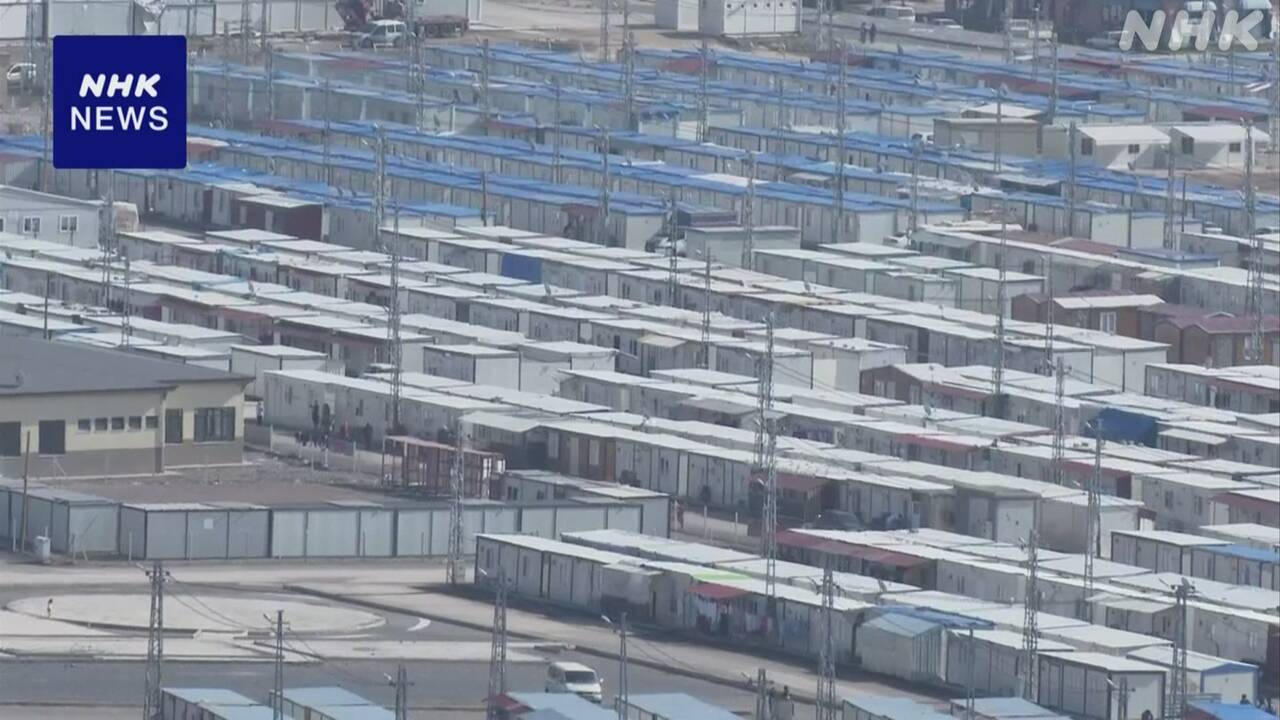June 6 marks one year since the Turkey-Syria earthquake that killed more than 59,000 people. Reconstruction of cities is underway in the disaster-stricken areas of Turkey, but many people are still forced to live in temporary housing in containers, and dealing with the outflow of population and the hollowing out of industry are also major challenges. The road to recovery is a difficult one.
The massive earthquake that occurred in southern Turkey on February 6 last year
killed more than 59,000 people, including
53,537 in Turkey
and approximately 6,000 in neighboring Syria .
In the disaster-stricken areas of southern Turkey, the scars of damage remain in many places, with some broken buildings still untouched.According to the Turkish government, nearly 700,000 people are still living in temporary container housing. It means being forced.
President Erdoğan has publicly promised to complete public housing for approximately 320,000 households in the year since the earthquake, but only approximately 50,000 households are expected to move in, and construction work continues in various locations. It is being
In Kahramanmaras and Hatay provinces, which suffered severe damage, temporary stores such as restaurants and beauty salons have been set up along the main roads, and rebuilding of the towns is progressing, but the population is outflowing and industries are being hollowed out. Responding to this is also a major issue.
Meanwhile, in Syria, where the civil war continues, many people are still forced to live in tents and the road to recovery is uncertain, with limited support to rebel-held areas in the northwestern part of the country that suffered heavy damage. It has become difficult.
Voices from disaster-affected areas Anxiety about the future Thoughts on recovery
Ahead of the one-year anniversary of the devastating earthquake, people in the affected areas in southern Turkey expressed their concerns about the still uncertain future, as well as their hopes for recovery.
Among them, a 20-year-old woman living in temporary container housing in Nurdar, Gaziantep Province said, ``For the past year, even if I wanted to forget the memory of the earthquake, I couldn't.'' "I couldn't leave him even for a moment," he said.
In addition, a 43-year-old security guard who lost his home in Antakya, the central city of Hatay province, and lives in a rented house with his four children said, ``Before and after the earthquake, my rent tripled, and I am barely making ends meet.'' "I'm exhausted and heartbroken," he said, expressing concern about his financial hardship.
Another 40-year-old man from Antakya said, ``They say the city will be rebuilt once the demolition is over, but nothing has been built and as you can see, it remains desolate.Even if everything collapses, we still have to survive.'' It won't happen,'' he said.
On the other hand, a 35-year-old man who set up a temporary store on the site of a kebab shop that collapsed in the earthquake and resumed business last month said, ``I came back to my hometown of Hatay for the sake of the people who were waiting for our taste.'' ``If we open a store, it will benefit not only our customers but also the wholesalers,'' he said, expressing his desire to contribute to the city's recovery.
A 41-year-old man who has been going to this store for many years with his wife said, ``It used to be a thriving business, but many people have left, so it no longer has the bustle it once had.'' I hope I can help with the recovery."
We also heard voices of sympathy for the Noto Peninsula earthquake.
A 64-year-old man who runs a makeshift hardware store in a deserted area of Antakya, lining up his products in containers, said, ``I pray for a speedy recovery.I hope that the people of Japan will not be affected by such a terrible disaster.'' I hope it doesn't happen again."
Families living in temporary container housing
In Turkey, nearly 700,000 people are still living in temporary housing in containers, and even one year after the earthquake, many of the victims are still forced to live in harsh conditions.
Of these, in Hatay Province, which was particularly hard hit, more than 900 households and approximately 5,000 people are taking shelter in temporary housing.Drainage channels were clogged due to heavy rain last month, and construction work is underway to replace water pipes. Ta.
Serkan Yardimuc (44), who requested the construction work, said that her home was severely damaged and she had to live in a tent as an evacuation center.Since July last year, her family of four, including her husband and two children, have been living in a container. I am living in temporary housing.
Although they are equipped with air conditioning, heating, and a kitchen, there are frequent power outages that sometimes make them unusable, and when strong winds blow, the container shakes, reminding me of the earthquake and forcing my family to rush outside. .
Yardumju said she would like to move into public housing for disaster victims that the government is developing, but she has not applied yet.
She said that Yardumju is having difficulty finding a place to live due to financial circumstances. She said, ``Although subsidies and interest-free loans are available, he has no savings and it is not easy to purchase as prices continue to rise.'' No,” she said.
Her eldest son Yusuf, 14, lost his best friend in the earthquake and many of her friends also left the city, saying, ``I hope Hatay is rebuilt and we can all come back and see each other again.'' I think it's good,'' he said.
Her wife Zeynep, 50, has also created a vegetable garden in the limited space behind the container to grow vegetables to help relieve stress for their children.
Zeynep said, ``Taking care of plants helps me heal.As survivors of the earthquake, we have to live to the fullest.''

